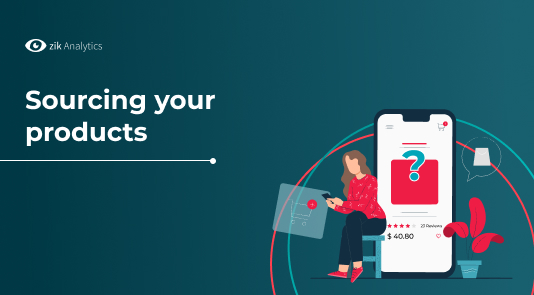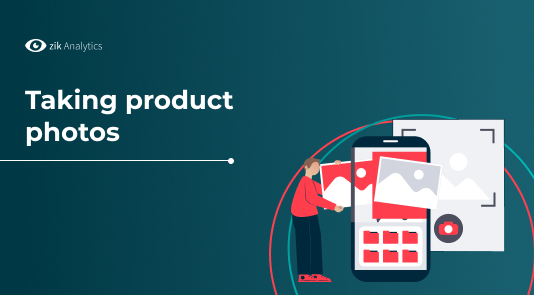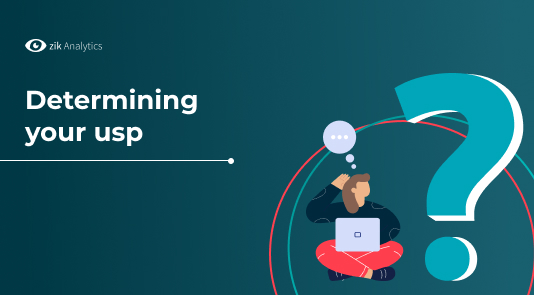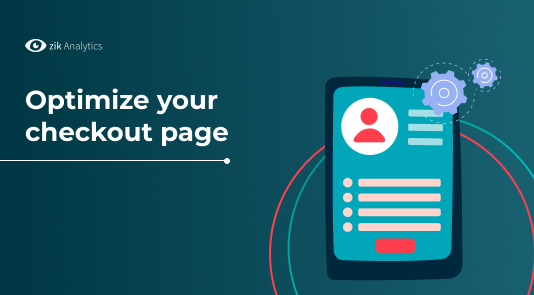Building an online business is hard. Operating an online business is even harder. There are hundreds of decisions to make each day, from where to source products for your ecommerce store to what to sell, to which ecommerce platform to host your store and design it, to what messaging to use on your social media channels, and more.
It can be hard to keep up with all the latest trends, so to help you navigate the constantly changing landscape of online marketing, we’ve put together this dropshipping checklist for building an online dropshipping store.
Here is a list of things to consider when building an online store to sell products as a dropshipper. This will help you ensure you’re building a successful store, and on the right track to making money. If you are looking for a Shopify store launch dropshipping checklist, then this list should help you get started.
1. Research Your Market and Competition

Once you have decided on a custom domain for your business, it is time to research your competition. What are the biggest brands in your niche? When starting a dropshipping business, it is important to understand the market you’re in and identify your biggest competitors.
This will help you identify where to find the best products to sell, and where to look for opportunities to differentiate your products from your competitors.
It will also help you build a marketing strategy that focuses on building a fanbase for your brand, rather than trying to beat your competitors on price.
2. Figure Out Where to Source Your Products

For a dropshipping business to be sustainable, it must source products from reliable suppliers, who have excellent reputations and quality products. This will ensure that your products are of high quality and that you can trust them.
It will also help you ensure that you can source products from a variety of sources and a wide range of price points.
3. Product Photos

A picture is worth a thousand words, and if your goal is to sell more products online, then the quality of your product photos is crucial to your success.
Product photos are the window through which potential customers are able to see and assess your products, and without high-quality photos, potential customers may not be able to visualize or understand their purchase options.
You’ll want to invest in good-quality products and be sure to use white backgrounds so you can show off your products effectively.
Shooting video of your products is also helpful for e-commerce shoppers who prefer that format or who might be unable to see them in person
4. Determine Your Product’s Unique Selling Point

Before you even put up your online Shopify store, determine what makes your product special. Many people try to compete on price alone, but you’ll have much more success if you can offer your customers something unique.
What is it about your product that’s going to stand out in today’s crowded market? Who has already tried (and failed) to sell a similar product? Why should someone buy from you instead of them?
These are all questions you need to answer before taking your business live. Your product pages should be optimized for user experience. Remember to optimize your product descriptions using simple and effective copy. You can use product description generator tools to create winning product descriptions that convey your unique selling point.
5. Determine Your Costs and Profit Margins

Creating an ecommerce launch checklist is essential to ensuring that you’re making enough profit from your online business. Start by adding up all of your potential costs, including your product costs and shipping fees, before determining your profit margins.
If you find that you aren’t making enough money, consider finding more competitive prices on related products or making improvements to your eCommerce sales funnel.
Whatever you do, make sure that you don’t lose sight of your profit margin while listing products in your store. After all, if it doesn’t sell, it won’t matter how well-designed it is.
6. Sign Up for Analytics Tool

One of the most important aspects of online selling is analytics. Without analytics, you wouldn’t know if your sales are rising or falling, if your products are selling better or worse, or if your inventory levels are even healthy.
Google Analytics is a web analytics tool that tracks users as they move around your site and tells you how they got there, how they found what they were looking for, and how they interacted with your site once they got there.
It also gives you a snapshot of when your visitors arrived on your site, what they did while they were there, how long they stayed, and how they got off the page (either by leaving or by clicking on a link).
You can even use a combination of tools like MetaClickPro to track your website’s performance over time and conduct A/B testing for SEO.
7. Set Up Tax and Shipping Settings

Setting up tax and shipping rates on your ecommerce website is one of the most important aspects of running a successful eCommerce business.
The tax and shipping rates you set affect your profit margins, and also the customer experience on your site. You should also set up a shipping policy that’s easy for customers to understand and that includes clear rules on how to return items or request refunds.
You can use a third-party tax and shipping rate provider or use a combination of the two to set up your shipping policies.
8. Create a winning digital marketing strategy

As an eCommerce business owner, you have many options for how to advertise your products and services through various online sales channels. You can advertise on the web, on social media, or in other ways.
Great digital marketing strategies provide value for customers and bring in new customers. They are proven to be effective and profitable.
They provide long-term value and help you build a strong customer base.
If your digital marketing strategy is to grow your social media following, then you need to start by creating more content. Your social media strategy is what helps people connect with you and your brand on a deeper level.
Your social media posts should be short, informative, and engaging to help people understand what you’re trying to say and why they should care. When it comes to your social media strategy, spend time getting to know your audience.
9. Optimize your checkout page

Your check-out page is crucial for online shopping and can increase conversions when optimized.
Your checkout page should have a clear call to action, be user-friendly, and provide a clear way for customers to quickly and easily complete the process.
An optimized checkout page will also increase sales by reducing abandonment. You can also use your checkout page to send your customers more information about your products, which will increase the chances they’ll convert.
10. Focus on SEO and content marketing for your eCommerce

SEO (Search engine optimization) and content marketing are important for any successful eCommerce business. They help you increase your organic search ranking, build trust with your customers, and increase your conversions.
SEO also enables you to generate more leads, increase the quality of your traffic, and convert more of them into paying customers. SEO and content marketing work together to help increase your brand’s visibility in search engines.
11. Add a blog to your website to increase conversions

A lot of online store owners overlook blogging as a means to drive traffic and generate leads.
But your blog is a valuable marketing tool that can help you market your product and service, bring in targeted traffic, and increase conversions.
With a blog added to your website, you’ll create content that is unique to your business, which will set you apart from the competition.
If customers trust what they read on your blog, it could convince them to purchase from you or refer their friends to you.
Even if sales aren’t your primary focus, adding a blog gives you an opportunity to connect with potential customers by showing them who you are as a business owner and what makes your brand special.
Validate Winning Products Before You Launch With This Dropshipping Checklist
Before you build your store, make sure you’re selling products people actually want. ZIK Analytics’s eBay product research tool helps you find high-demand, low-competition items across any niche. Sort by sales data, competition, and profit margins to validate your product ideas in minutes. This tool is a must-have for anyone serious about launching a profitable dropshipping business in 2025.
Frequently Asked Questions on Dropshipping Checklists
Here are some frequently asked questions about having a checklist in Dropshipping:
How do I research my dropshipping niche?
Start by checking demand, competition, and trends in your chosen niche. Use tools like Google Trends, ZIK Analytics, or social media insights to see what’s popular. Study your competitors’ products, pricing, and marketing. Look for gaps you can fill with unique products or better value.
Where should I source dropshipping products?
Find reliable suppliers through platforms like AliExpress, SaleHoo, or local wholesale directories. Look for good reviews, fast shipping, and quality products. Test suppliers by ordering samples before listing items in your store to ensure they meet your quality and delivery expectations.
Do product photos really matter?
Yes. High-quality product photos build trust and boost sales. Clear, well-lit images on a plain background help customers see details. Include multiple angles and, if possible, lifestyle shots showing the product in use. Good visuals can make your store look more professional and increase conversions.
What is a USP in dropshipping?
A USP, or unique selling point, is what makes your product or store stand out from competitors. It could be better quality, faster shipping, eco-friendly materials, or exclusive designs. A strong USP helps attract customers, build brand loyalty, and justify your pricing.
How do I work out profit margins?
To work out profit margins, subtract your total costs (product, shipping, fees, marketing) from your selling price. Then, divide the profit by the selling price and multiply by 100 for a percentage. Aim for margins that cover expenses and leave enough for sustainable growth.
How can I improve my checkout page?
Improve your checkout page by keeping it simple, mobile-friendly, and fast-loading. Use clear calls to action, offer multiple payment options, and display trust badges. Reduce distractions, allow guest checkout, and show shipping costs upfront to prevent cart abandonment and increase conversions.
How do I validate products before launch?
Validate products by checking demand, competition, and profitability. Use tools like ZIK Analytics to analyse sales data and trends. Order samples to test quality, review customer feedback on similar items, and compare supplier reliability before committing. This reduces risk and increases your chances of selling successfully.












